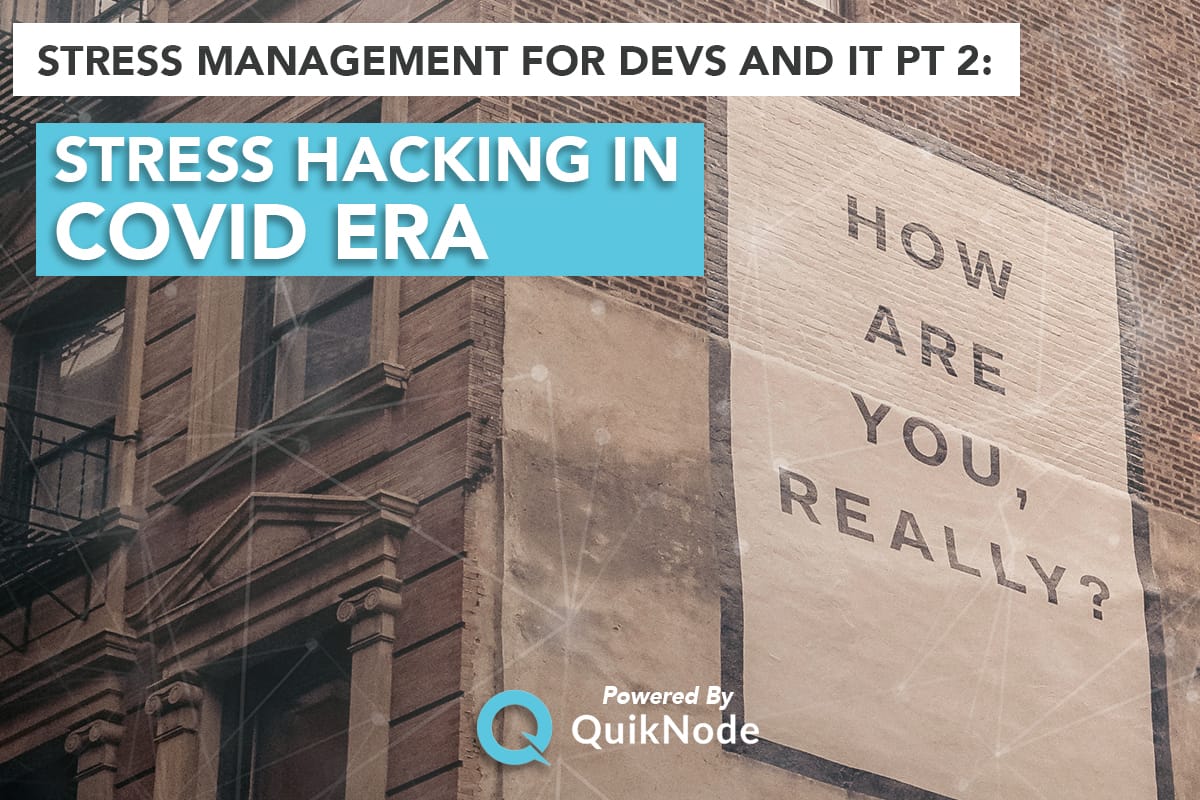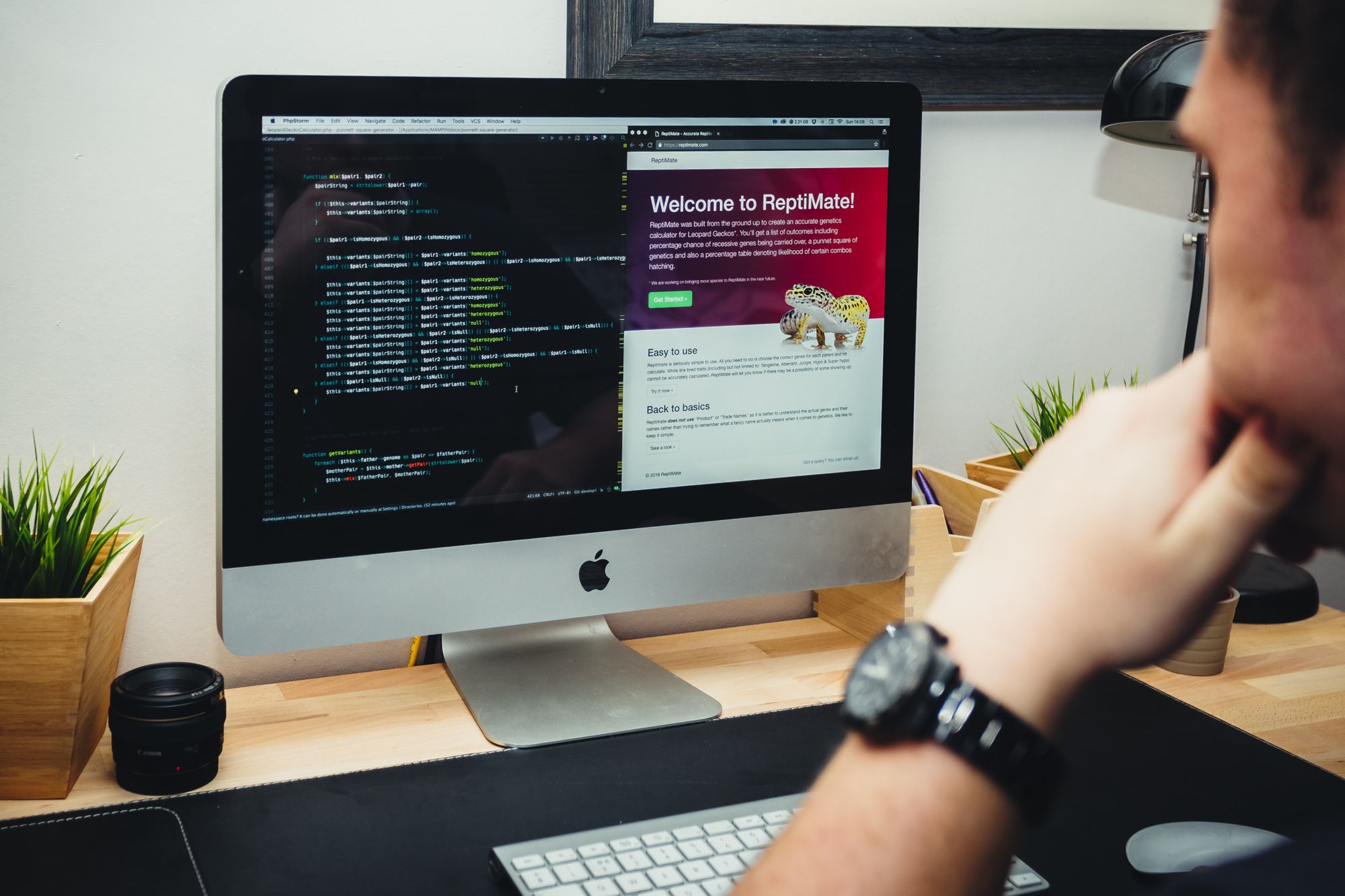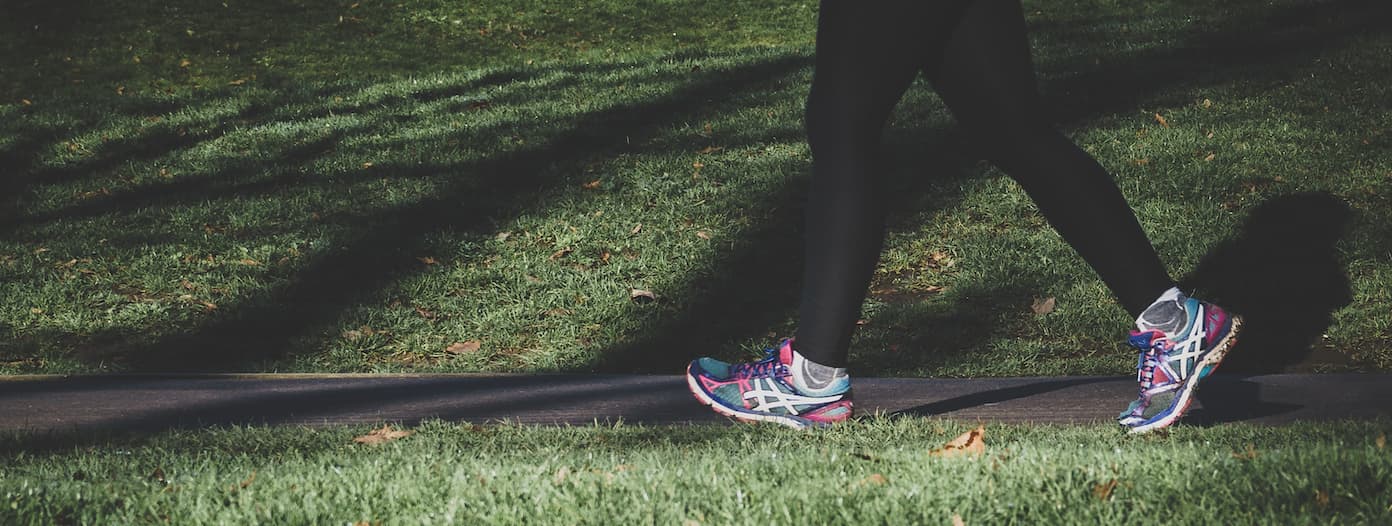Stress Management for Devs & IT PT2: Stress Hacking in the COVID era
Stress can be an insidious slow burn that engulfs over time just underneath our awareness, or it can strike like lightning and take over in a moment. In IT and dev life, we have our own brand of stressors that can overwhelm & wreak havoc on productivity and every area of our lives.

In this edition of Stress Management for Devs & IT, we’ll be looking at ways to identify and work through anxiety and other mental well-being issues relating to our work, lives, and everything affecting them.
With most mental health-related articles out there, the focus is usually on addressing the issue itself. We will address it but we believe that pragmatic things that help alleviate the problems causing stress that leads to anxiety are just as important. We will cover both aspects in an abridged format.
We MUST evolve
With technology changing every day, it can be stressful to stay abreast of what is new while also keeping up with the day-to-day. If you do the same thing every day without evolving in your role to help your company evolve, both you and your organization will fall behind. This can be tough to balance. We have found that working with tools that offer an in-app knowledge base educate while you work, so we provide quick and easy guides embedded in our dashboard that move with your workflow.
TIPS that you might already know but should revisit:
- Follow informative people and organizations on social media. Here are a few on Twitter that we like within our space: @antiprosynth @twigwam @hackerno @defiprime @VitalikButerin @TheBlock__
- Sign up for email newsletters that keep you up-to-date
- Keep the dialogue open with peers around new trends in your space
- Join groups (Discord, Telegram, etc…)
- Ask for help. If you’re feeling behind or overwhelmed, your leadership should help you. If possible, make it a part of your contract to get continuing education. It helps you and your organization.
Work-From-Home: Us: “Amazing!” COVID19: “Hold my beer...”
A decade ago we would have laughed at the idea that working from the comfort of our own couch or desk could be stressful but it turns out that it is. Especially right now. We are in the age of quarantine / shelter-in-place / stay-home orders / lockdown or whatever term you might use so we get work-from-home in extreme form. Even those who worked remotely previous to COVID can’t hit the co-working space or café to separate work / home or just get away. Most of us are just home all day, everyday.

Here are some basic tips to follow (when in doubt - think boundaries)
- Designate a work space that is just for work. You might laugh at the idea of having a “home office” because most of us live in smaller spaces. My area is a corner in my kitchen. The idea is that it feels separate from the rest of the living space.
- Get dressed. Simple but crucial. It doesn’t have to be formal, just get out of the PJs and into some real clothes. It’s another boundary between work and home and it helps to feel normal. Now you can go ahead and select “video on” in that Zoom meeting.
- Set a schedule and maintain it. It’s key to maintaining life/work balance to have set boundaries for when you work and when to call it a day.
- Take breaks. Know your company’s break policy and if you are self-employed, give yourself scheduled times to get away from the screen and reset. This is necessary for your body as much as your mind. We talk more in depth about that in Pt.1 of this series.
- Don’t get sucked in by news, social media, etc. When navigating pandemics and civil unrest, it is important to stay informed but don’t let yourself get lost in the news-feed. Set times when you check in on news during critical times and then let it go.
- Go outside. Get fresh air and sunshine: go for a run or walk, weed the yard, hit the park and follow the COVID guidelines for your area.
- Beginning and end of the work day transition rituals. If you drive or take the train to work you are getting there physically and mentally. Maybe you listen to podcasts / music or read. You can do this at home too and it gets you in the right mindset to begin work. The same is true with getting yourself away from work.
- Stay connected socially. If you work in an office and are suddenly working from home, you might be cut off from critical social connections. Get on calls, texts, Slack or whatever your work uses. Check in about weekends, families and whatever you talk about in the office. This pays dividends to mental health as well as productivity across teams.
DOPAMINE HITTERS: Feels good now, sucks later.
Caffeine, sugar, alcohol, social media, dating apps...the list is huge. These are all things that make us feel good or exhilarated for an hour or minutes or even seconds but there’s a price to pay for that fleeting boost. Combine this tendency with being at home where all of these things are accessible and no one is there to give you a friendly “Daaaang! Really hitting the coffee today, huh?” Things can spiral quickly. I am speaking from direct experience!

Tips:
- Limit yourself and then have something to fill the gap when you get the impulse to overindulge. Something like this: 2 cups of coffee per day is OK, but then you have caffeine-free tea that you can drink at any point.
- When you take breaks, consider that social media is not a break because our brains are in hyper drive while we are scrolling and clicking. Take a break and listen to music, go outside, walk, stretch, call someone, or pet your cat.
- If you feel like things are out of control with alcohol or an addictive behavior, tell your doctor, tell a friend, reach out. You are absolutely not alone.
- This is just grazing the surface of this vast complex issue. Realize most of us humans are dealing with this dynamic at some level.
Lifestyle: DIET AND EXERCISE vs A DIET PILL - Literally and figuratively
There are quick fixes for most problems. For example, for energy you can use caffeine. But this cycle can be daunting: in the moment when we feel low energy or uninspired and need to perform, we often reach for that espresso or yerba maté. But doing that over and over can create a cycle that leads to crashes and ultimately burnout, physically as well as mentally. The dynamic is similar for many things. If we treat boredom, stress or depression with a few drinks and do that as a go-to solution, we might be sidestepping the underlying issues and creating a dangerous pattern that can lead to a multitude of problems.
The irony with quick fixes is that they tend to increase the original problem with heightened use. Over time you’ll end up requiring more of whatever it is to get the job done. On the other hand, the cure is in the practice. We can develop routines and skills that provide a buffer for us with issues like energy, stress and depression. In addition, we can get used to going to sustainable solutions like taking a quick walk instead of that 4th cup of coffee when we hit a low energy moment. This helps us begin to master our issues as opposed to fighting with them.

CONSIDER THESE POSSIBLE SOLUTIONS:
Low energy/fatigue/lethargy
- Meditation
- 20 minute nap
- Deep, intentional breathing
- Addressing sleep problems
- Reducing caffeine
- Reducing sugar intake
- Cardiovascular exercise
Feeling Anxious
- Limiting social media time
- Exercise / yoga
- Breathwork
- Reaching out to friends and family
- Connecting with therapist
- Checking in with doctor
- Addressing diet
Feeling Down
- Mindfulness
- Meditation
- Exercise / yoga
- Mindset retraining
- Naturopathic therapies and remedies
- Bodywork
- Therapy/Coaching
Stress management and relaxation techniques that work
Managing anxiety and stress is not on a point A to point B trajectory: it is a practice. If we can build it into our lives and routines, we increase our productivity and ability to be present as well as our contentment with life. For many, the journey can begin with trying to get our heads above water and leads to a deeper connection with ourselves and the world around us. Here are a few pragmatic things that can help:
- Practice slow, intentional breaths into the diaphragm - expanding the rib cage - about 6 breaths per minute (5 second inhale, 5 second exhale) for 5 minutes to create physiological balance. Even just a few of these really help during stressful moments.
- Stretch after sedentary periods.
- Use a mindfulness app.
- Exercise can help discharge the physiological and emotional buildup of energy from anxiety and stress, plus energize and activate your mind when you have brain fog.
- We’ve already said it, but TAKE BREAKS during work sessions.
Be easy on yourself
Mindfulness is simply observing what you are thinking and feeling with a warm heart, instead of avoiding difficult feelings or over-identifying with them, which makes them only feel bigger.
Often people believe that being easy on oneself is akin to “letting yourself off the hook” or being a slacker. The reality is that when we aren’t attaching our self-worth to results, it lets the pressure off and relieves us of the fear of failure mentality. This then allows us to take risks and make moves we might not if we are living in fear mode.
Our Community
We exist in a budding technology and community so naturally, we are cutting new paths and as a result, we are also finding new versions of issues that show up specific to the Ethereum-blockchain-dev-life environment. We want to support and help form community on all levels.
Need help with your project or have questions? Contact us via this form, on Twitter @QuickNode, or ping us on Discord!
About QuickNode
QuickNode is building infrastructure to support the future of Web3. Since 2017, we’ve worked with hundreds of developers and companies, helping scale dApps and providing high-performance access to 16+ blockchains. Subscribe to our newsletter for more content like this and stay in the loop with what’s happening in Web3! 😃





